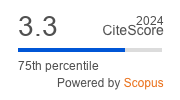Article | Open Access
| Ahead of Print | Last Modified: 12 November 2025
Between Supportive and Involved Fatherhood in Slovenia
| Views: | 156 | | | Downloads: | 230 |
Abstract: The article draws on four qualitative studies of fatherhood in Slovenia performed over 15 years (2005, 2008, 2015, and 2020) to analyse factors shaping the involvement of fathers in child‐rearing through a diachronic perspective, situating the empirical findings within broader socioeconomic and policy transformations. The period under study included several ambivalent developments. On one hand, the intensification of work, flexibilisation, and precarious employment added to the primacy of paid work and men’s caregiving roles being given limited recognition in organisational cultures. On the other hand, family policy measures— notably the introduction of paternity leave, parental leave reforms, along with other work–life balance reforms—gradually supported fathers taking on greater roles as parents. The findings reveal that by 2005, the traditional model of uninvolved fatherhood was already in decline, giving way to new practices in the form of supportive fatherhood. Although men did participate in childcare and domestic work, their roles were chiefly to assist their female partners. Over time, practices of involved fatherhood also emerged, characterised by more active and egalitarian caregiving. Despite strong aspirations for active participation, empirical evidence shows a persistent gap between ideals and practices. Nevertheless, in Slovenia, fathers are now typically present during pregnancy and childbirth, make use of paternity leave, and engage ever more in everyday childcare, signalling a gradual shift toward the involved fatherhood model.
Keywords: caregiving; domestic labour; family policy; involved fatherhood; labour market; parental leave; Slovenia; supportive fatherhood
Published:
Ahead of Print
Issue:
Vol 14 (2026): Involved Fatherhood in European Post-Socialist Societies (In Progress)
© Alenka Švab, Živa Humer. This is an open access article distributed under the terms of the Creative Commons Attribution 4.0 license (http://creativecommons.org/licenses/by/4.0), which permits any use, distribution, and reproduction of the work without further permission provided the original author(s) and source are credited.


